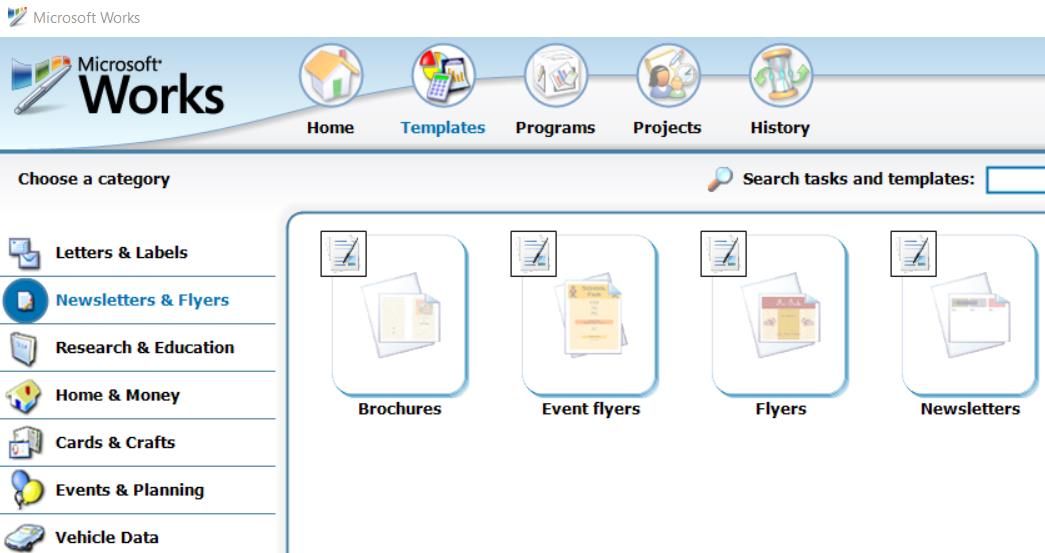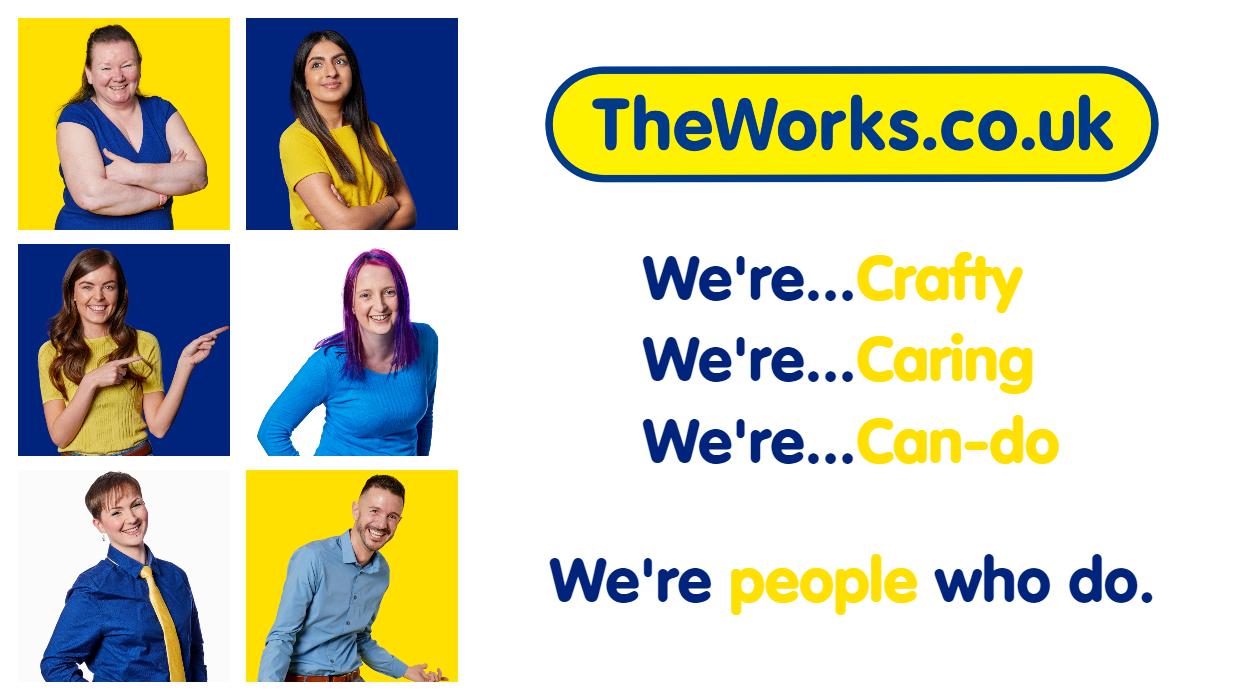The Works Indy - Getting Things Done Digitally
When we talk about getting things done, especially in our digital lives, it's almost like we're talking about "the works." This phrase can mean so many things, you know? It might be about all the different tasks on your plate, or perhaps the tools you use to finish them. It could even be about the creative things you bring into being. For anyone trying to manage their digital efforts, whether for a business or just personal projects, understanding how all these pieces fit together is pretty important. We're going to look at some ideas around how these "works" come together, perhaps in a context like "the works indy," thinking about what it takes to make everything run smoothly.
Think back to how we used to handle our daily tasks. There were different software programs, each with its own way of doing things. Some of these tools, like older productivity suites, were quite common for a long time. They helped many people get through their everyday computer jobs, like writing documents or keeping track of numbers. But, as you can imagine, technology moves on, and what was once very useful might not be what we use today.
So, we're going to explore some common situations people face with their digital tools and creative output. We'll touch on things like making sure you can actually sign into your programs, what kind of computer setup works best, and how you get help when you need it. It’s about making sure "the works indy" – whatever your digital tasks or creations might be – can truly happen without too many bumps along the way. It’s all about making your digital life a bit easier, really.
- Kesha And 3oh3 The Unforgettable Blah Blah Blah Connection
- Simone Biles The Journey Of Pregnancy And Motherhood
- Exploring The Dynamic Duo Of Keira Knightley And Natalie Portman
- Vicente Fernandez Sisters A Glimpse Into The Lives Of The Iconic Singers Family
- Unveiling The Mystery Who Is Spencer James Real Dad In All American
Table of Contents
- What's the Deal with Older Productivity Software?
- Facing Login Troubles and Other Digital Hiccups?
- Why Do Browsers Matter for Your Digital Tools?
- What About Getting New Accounts and Help?
- Looking at Managed Services for Your Digital Needs
- Understanding "Works" - From Software to Creations
- Protecting Your Creative Output and Ideas
- The Bigger Picture for Independent Creators and Businesses
What's the Deal with Older Productivity Software?
Once upon a time, there was a software package that many people used for their everyday computer tasks. It was called Microsoft Works. This program was a pretty common choice for homes and small offices, you know, because it offered a way to handle things like writing letters or putting together simple spreadsheets without needing a much bigger, more expensive office suite. It was, in some respects, a more affordable choice for folks who just needed basic functions.
Microsoft Works came with what you might call basic tools. It typically included a word processing part, so you could type up documents. It also had a spreadsheet feature, which was useful for organizing numbers, and sometimes even a database. For a while, it was a pretty good solution for many computer users. You could buy it as a program on its own, or sometimes it came as part of a home computer package. It even had different versions for older computer systems, like DOS, and of course, for Windows.
However, like many things in the fast-moving world of computer programs, Microsoft Works eventually reached its end. Around 2010, the company that made it decided to stop offering it. They started to replace it with a simpler version of their main office software. So, if you were used to using Works for your daily jobs, you might have had to switch to something new. This is just how things go with computer programs; they tend to change and get updated, or sometimes they just go away, making room for different solutions.
- Discovering The Best Ice Cream In La Jolla A Sweet Adventure
- The Remarkable Life Of Kris Jenners Mother A Legacy Of Strength And Resilience
- Unraveling The Enigmatic Life Of Andrea Canning
- Unveiling The Magic Of Ronaldinho The Soccer Maestro
- Unveiling The Legacy Of John Mccook A Journey Through Time
Remembering "the works indy" and its past
Thinking about older software like Microsoft Works helps us consider how people used to get their digital tasks done. When we talk about "the works indy," it could bring to mind those times when independent folks, or maybe small businesses, were trying to make their digital efforts happen with the tools available to them. It's almost like a little piece of history, you know, seeing how people managed their writing or their numbers before today's more connected programs became so common. That old software was a stepping stone for many. It allowed people to get comfortable with digital tasks, even if it wasn't the most advanced thing out there. It just got the job done, which was what mattered for a lot of people trying to handle their own "works."
Facing Login Troubles and Other Digital Hiccups?
Sometimes, you know, getting into your digital tools can be a bit of a challenge. If you're having trouble signing in, that's pretty common. Maybe your password just won't work. You might find yourself locked out. That can be a real pain. Especially when you need to get things done. So, if that happens, reach out. Talk to the person who looks after your account. Or the one who helps manage the software. They usually help you get back on track. It could be a new password. Or just sorting out a technical glitch. It's really about smooth access.
When you forget your password, the system usually needs your email address and your login name. You put those in, and then information about how to reset your password gets sent to that email address. This is a pretty standard way to help you get back into your account without too much fuss. It's a system that's been put in place to make sure you can regain access to your things, even if your memory isn't perfect. It's a simple process, but a really important one for keeping your digital life moving.
These little difficulties, like not being able to log in, can really slow things down. They are, in a way, common roadblocks in our daily digital activities. It's like trying to start your car and the key isn't working; you just can't get going. So, knowing who to contact or what steps to take for a password reset is a basic but very helpful piece of information. It saves you time and frustration, letting you get back to what you need to do, which is always the goal when you're working with digital tools.
Keeping "the works indy" smooth and accessible
For "the works indy," easy access is key. You want to keep moving forward. No hitches, you know. Imagine you're an independent creator, or running a small operation, and you hit a wall trying to get into your design program or your customer list. That's a problem. So, making sure the process for signing in, or for getting a new password, is straightforward is really important. It helps ensure that all your efforts, all "the works indy" you're trying to accomplish, don't get stuck because of a simple access issue. It's about keeping the flow going, making sure your digital tools are always ready for you to use them.
Why Do Browsers Matter for Your Digital Tools?
When you use online programs or websites, the kind of internet browser you have can make a big difference. Think of your browser as the window you look through to see the internet. Some programs work best with certain windows, or certain versions of those windows. For the best experience, it's usually a good idea to use the newest version of a browser that the program supports. This helps make sure everything looks right and works the way it should. It can prevent things from looking strange or not working at all.
There are usually specific browsers that a program is officially set up to work with. If you happen to be using a browser that isn't on that list, you might run into some problems. For example, the text mentioned a situation where someone was using an older version of Safari, version 5.3, and it wasn't one of the browsers that was officially supported. This means that while you might be able to open the program, it might not function correctly, or some parts of it might not show up at all. It's a bit like trying to use an old map for a brand new road; it just doesn't quite fit.
The folks who make these online programs often list which browsers they officially support. These are the ones they've tested and know will work well. So, if you're ever having trouble with an online tool, one of the first things to check is your browser. Is it up to date? Is it one of the ones that the program recommends? Keeping your browser updated and using a supported one is a simple step that can solve a lot of potential headaches. It's just good practice for anyone spending time online, really.
Getting "the works indy" to play nice with your computer
For "the works indy," having the right browser is pretty important. If you're doing something creative online, or managing your tasks through a web application, you want it to look good and respond quickly. So, making sure your browser is one that the program officially supports helps everything run smoothly. It means your independent projects or business activities won't be held back by a simple browser mismatch. It's about setting yourself up for success, ensuring that all your digital "works" can truly shine and function as they should, without any weird display issues or slow responses. It’s a foundational step, you know, for any kind of online effort.
What About Getting New Accounts and Help?
If you need to get started with a new program or service, there's often a specific way to ask for an account. Usually, you don't just sign up on your own. Instead, you might get a special code or key from someone who manages the program, like an administrator. You then enter this key when you apply for your new account. This process helps make sure that only the right people get access to the system. It's a way to keep things secure and organized, rather than just letting anyone join up. It’s pretty typical for specialized programs.
This system of using an account request key is common in environments where access needs to be controlled. It means that the person in charge can manage who is using the program and for what purpose. It's a bit like getting a special invitation to a private club; you need the right pass to get in. This ensures that the program is used by its intended audience, and it helps maintain the integrity of the data and operations within that system. It's just a sensible way to handle things, really, when you have specific users in mind.
And if you ever run into problems, or have questions about your account, the person who manages the program is usually your first point of contact. They are there to provide assistance and help you through any difficulties you might encounter. Whether it's a login issue, a question about how something works, or needing a new account, they are the go-to people. Having a clear point of contact for support is really helpful. It makes sure you don't feel lost when you're trying to figure things out, which is pretty reassuring.
Supporting "the works indy" efforts with the right access
For "the works indy," having proper access and support is really important. If you're an independent professional or a small team, you need to get into your tools quickly and easily. Knowing that there's a clear way to apply for an account, perhaps with a specific key from an administrator, gives you a sense of order. It also means that if you hit a snag, there’s someone you can talk to for help. This kind of structured support helps ensure that all your independent "works," your projects and tasks, can proceed without unnecessary delays or confusion. It’s about creating a smooth pathway for all your digital activities, you know, making sure you’re never left hanging when you need to get things done.
Looking at Managed Services for Your Digital Needs
When it comes to keeping your digital tools and systems running smoothly, some businesses choose what's called "managed services." This is where an outside company takes care of all your technology needs for you. It's like having your own dedicated tech team, but without having to hire them full-time. They offer everything you might need in one complete package. This can include things like making sure your computer systems are always working, keeping your software updated, and protecting your data from online threats. It's a way to simplify the whole tech side of things, so you don't have to worry about it yourself.
Managed services can be really helpful for businesses that don't have their own in-house tech staff, or for those who want to free up their own people to focus on other things. Instead of dealing with computer problems or software updates, you just let the managed service provider handle it. They often work behind the scenes to prevent issues before they even start. This can save a lot of time and frustration. It's about having a reliable partner who looks after your digital setup, allowing you to focus on your main activities, whatever they might be.
The idea behind managed services is to provide a complete solution. They aim to cover all the bases, from making sure your network is stable to handling any technical glitches that pop up. This comprehensive approach means you get consistent support and proactive maintenance. It’s about peace of mind, really. Knowing that your digital infrastructure is being looked after by experienced people can make a big difference, especially in today's world where so much depends on technology. It helps you avoid those unexpected breakdowns that can really disrupt your day.
How managed services support "the works indy"
For "the works indy," especially for independent professionals or smaller businesses, managed services can be a real benefit. If you're busy creating, building, or providing a service, you probably don't want to spend your time fixing computer problems. Managed services can take care of all those technical tasks, allowing you to focus on your core "works." It means your digital tools are always ready, always secure, and always working as they should. This kind of support helps ensure that your independent efforts aren't derailed by technical hiccups. It's about providing a solid digital foundation, so you can keep doing what you do best, you know, without getting bogged down in IT issues.
Understanding "Works" - From Software to Creations
The word "works" can mean a lot of different things, depending on how you use it. Sometimes, it refers to software, like the old Microsoft Works program we talked about. This was a tool, a collection of computer programs designed to help you with certain tasks. It was about making everyday jobs easier to accomplish by giving you the basic tools you needed, including things like a way to write documents. So, in that sense, "works" means the actual programs that do the job.
But "works" can also mean something much broader. It can refer to everything someone possesses or has available. Think about it like this: if someone says they lost "the whole works" when their boat tipped over, they mean absolutely everything – their fishing rod, their reel, their tackle box, the whole lot. Or, if you order a pizza "with the works," you're getting all the toppings, every single one. In this way, "works" means the entire collection of something, all the pieces that go together, which is pretty inclusive.
Then, there's another very important meaning of "works." This is when we talk about original expressions of ideas, thoughts, or feelings. These kinds of "works" are often protected by special laws, like copyright laws. This protection is there to keep the rights of the people who created them safe. It lets the creators control how their "works" are used and shared. So, a song, a book, a painting, or even a piece of software code can be considered a "work" in this sense. It's about protecting the unique things that people bring into existence, which is really important for creators.
The many meanings of "the works indy"
When we use the phrase "the works indy," it could, in a way, bring together all these different meanings. It might refer to the actual digital tools and software that independent people
- Edward Bluemel The Rising Star In The Crown
- Unveiling The Charismatic Ryan Paevey A Journey Through Fame
- The Legacy Of The Jackson Family A Journey Through Time
- Noah Lalonde A Rising Star In The Spotlight
- Unveiling The Life Of Angel Iris Murphy Brown

How to Install Microsoft Works on Windows 10 or 11

Team work concept. Business, teamwork infographics. Pieces of a puzzle

The Works Stores Ltd Mission, Benefits, and Work Culture | Indeed.com